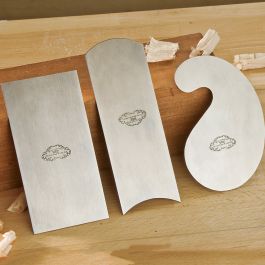Woodchipper
Member
In regard to my thread on fine tuning a blank finish, I noticed that the method of sanding is with the lathe on. In my woodworking class of the Late Bronze Age, we were told to sand with the grain. Comments? Thanks.
Thanks. As for the skew, need to practice with that critter.As long as you use light pressure (ie. don't gouge the wood too deeply with lower grits), the scratches will sand out easily with each progressive grit. I do sometimes sand with the grain as well, but only on the lower grits. It really doesn't add much time if you feel it is needed.
Another school of thought is that, if you keep your skew sharp enough, and are practiced enough with it, you often don't need to sand at all. Definitely don't sand if you have segments with metal or contrasting woods as the dust/flakes will get into the other woods.

